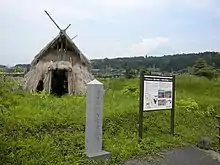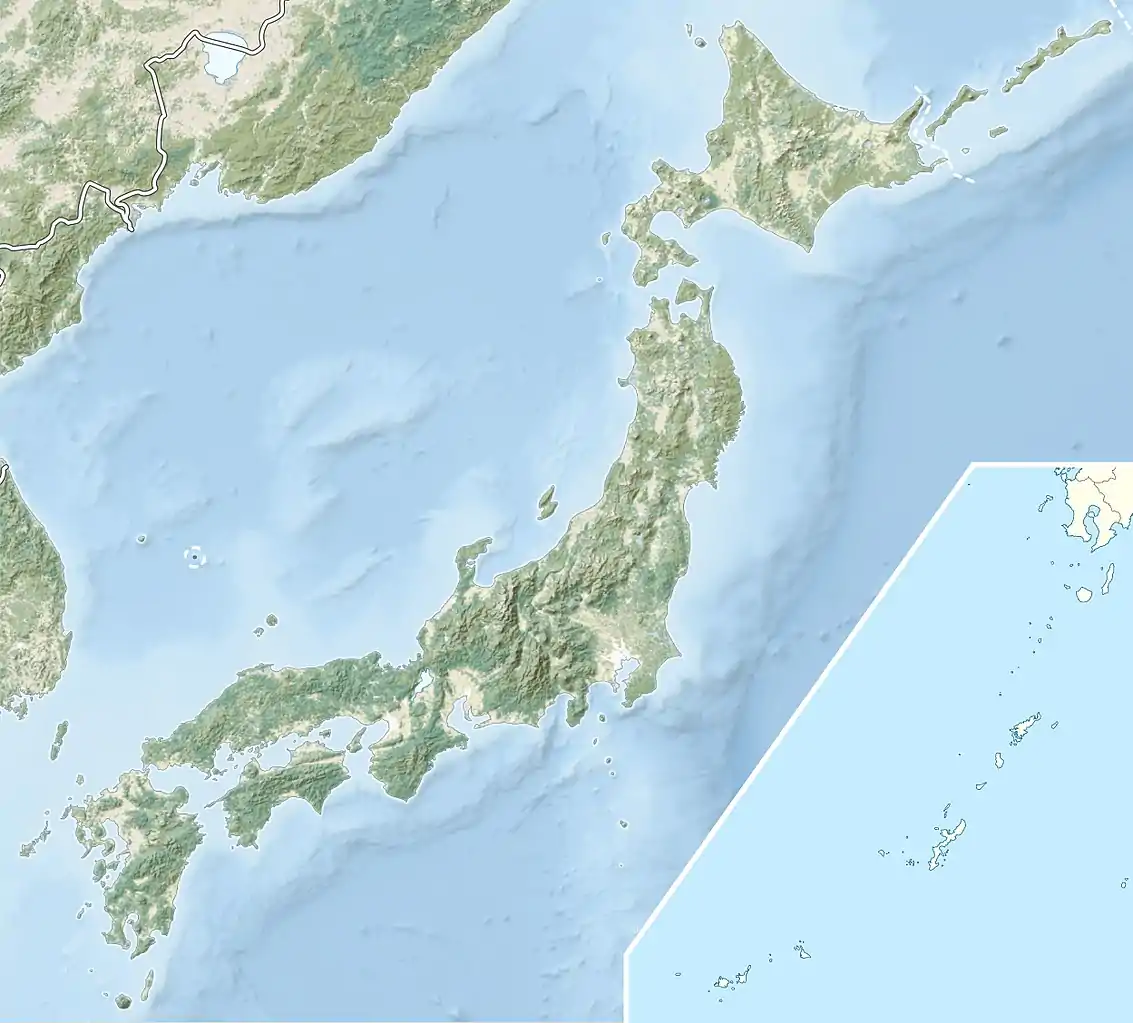Ōshikakubo ruins
Ōshikubo ruins (大鹿窪遺跡, Ōshikubo iseki) is an archaeological site containing the ruins of an Incipient Jōmon period settlement located in what is now part of the city of Fujinomiya, Shizuoka in the Tōkai region of Japan. The site was designated a National Historic Site of Japan in 2008.[1]
大鹿窪遺跡 | |
 Ōshikubo ruins | |
 Ōshikubo ruins  Ōshikakubo ruins (Japan) | |
| Location | Fujinomiya, Shizuoka, Japan |
|---|---|
| Region | Tōkai region |
| Coordinates | 35°14′55.2″N 138°33′43.4″E |
| Type | settlement |
| History | |
| Periods | Jōmon period |
| Site notes | |
| Excavation dates | 2001, 2002, 2008, 2016 |
| Ownership | National Historic Site |
| Public access | None |
Overview
The site is located in the former town of Shibakawa, Shizuoka on a hill surrounded by lava flows from Mount Fuji. The site was found to contain the remnants of 14 pit dwellings, arranged around a horseshoe-shaped plaza. The dwellings have a hearth pit at the center, which was found to contain carbonized grains. The excavated remains included some 26,000 items, centering on shards of Jōmon period earthenware, hunting tools and stone implements.
Although earlier sites have been identified, the Ōshikubo ruins is the oldest Incipient Jōmon period (12,000 to 15,000 years ago) settlement yet discovered with pit dwellings, as other contemporary ruins were typically cave dwellings.
The ruins are currently backfilled and buried about 1 to 2 meters below the surface, although the site has a stone marker, information placard and a reconstruction of a faux pit dwelling.
References
- "千大鹿窪遺跡" (in Japanese). Agency for Cultural Affairs.
External links
- Fujinomiya City official site (in Japanese)